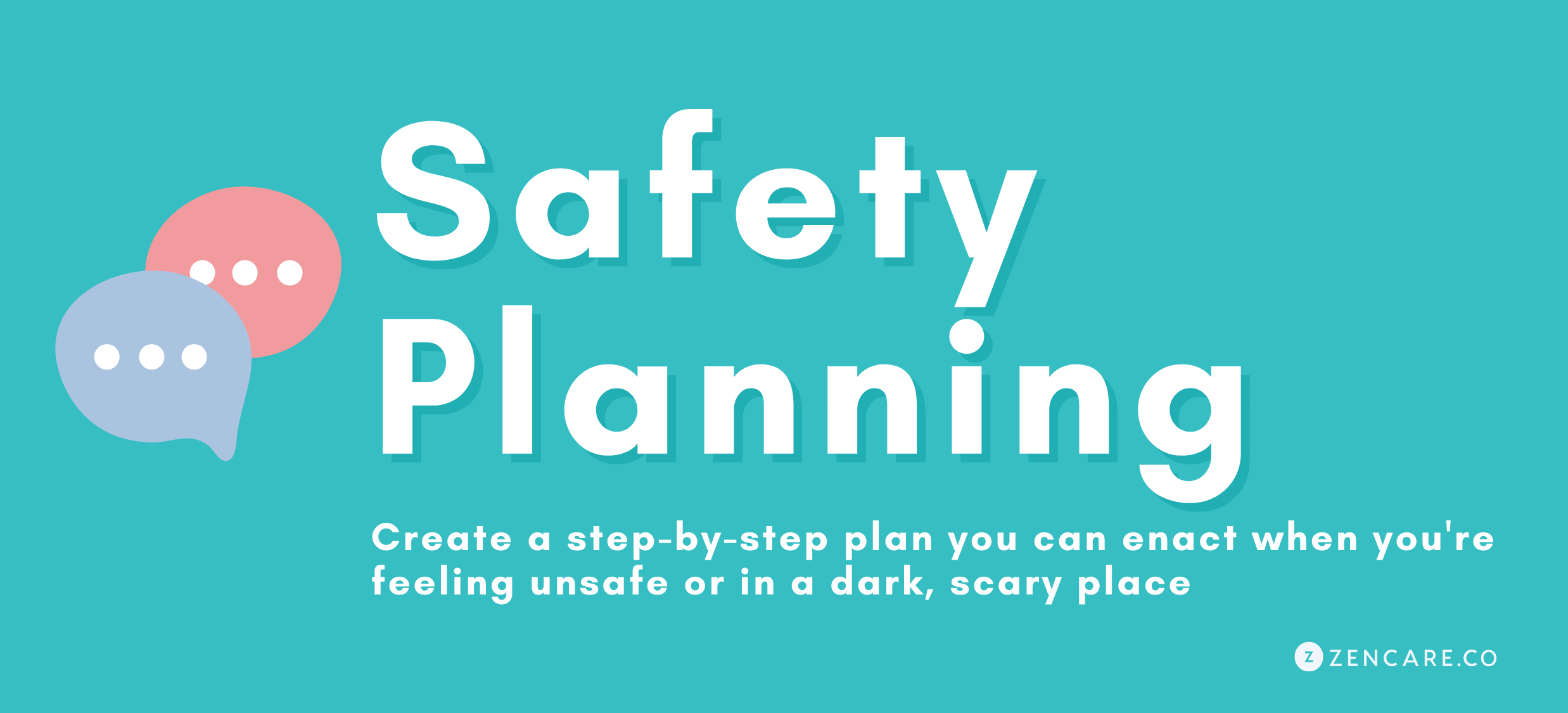A safety plan is a written set of instructions that serves as a crisis-prevention plan to be utilized when faced with negative emotions or stressful experiences that trigger the potential for harmful, unsafe behaviors. It is a step-by-step outline that helps to lead a person experiencing distress to safety.
Read on to learn more about safety planning and how to use it effectively.

What can a safety plan be used for?
A safety plan can be used by anyone experiencing any of the following challenges:
- Self-Harm. An individual may use a safety plan to help prevent themselves from causing injury to themselves by identifying triggers and providing distractions and coping skills before a crisis emerges.
- Suicidal Ideation. A safety plan can be used to identify both personal and professional supports to reach out to when in crisis and create an environment that aims to eliminate danger.
- Substance Abuse. A safety plan can be used to encourage harm-reduction or as a reminder to contact your sponsor or attend a support group meeting before a crisis emerges.
- Anger Management. A safety plan can be used to prevent a person from experiencing an outburst by identifying triggers and providing distractions and coping skills before a crisis emerges.
- Domestic Violence. This safety plan will differ from one used by someone experiencing distress related to their mental health, and will include more concrete action steps. A survivor may use a safety plan to create opportunities to leave an abusive situation by identifying supports and resources.
How to create a safety plan
1. List three warning signs (thoughts, images, moods, situations, behaviors) that indicate that a crisis may be developing
These warning signs can be emotional or physical changes, such as feeling a hot sensation or shakiness. They can also be situational triggers, such as being spoken to in an inappropriate tone, experiencing or witnessing unfair treatment, or walking past a place that brings up negative emotions or memories.
2. List three internal coping strategies that you can practice without contacting another person
You might utilize mindfulness exercises, such as Anxiety 5, 4, 3, 2, 1 or therapeutic journaling. Other coping strategies may include breathwork, meditation, yoga, or any form of physical activity that can be done independently.
3. List two people and two places that serve as distractions
These can be people and places that you are grateful for or evoke fond memories. A gratitude jar is a good way to collect prompts for this!
4. List three people you can ask for help, along with their contact information
These should be positive, supportive people who are readily accessible to you.
5. List professionals or agencies you can contact in an emergency
These can include your therapist, substance abuse or domestic violence counselor, or your local hospital. Hotlines such as the National Suicide Prevention Lifeline (1-800-273-TALK) are especially important to include.
6. Make your environment safe.
Create a safe environment by removing any items that could potentially cause harm, i.e. objects used to self-harm or certain quantities of alcohol, substances, or toxins.
Lastly, name the one thing that is most important to you and worth living for.
When to use a safety plan
The best time to use a safety plan is before a crisis emerges. A safety plan is to be used to avoid or prevent crises and decrease risk. If a person is in immediate crisis, the emergency room is the most appropriate solution.
Consider seeking support from a therapist
A safety plan can be developed on your own or with the help of anyone you are in a trusting relationship with. A mental health professional is not needed to create a safety plan. However, you may consider seeking support from a therapist if you continue to experience suicidal thoughts or an urge to self-harm, if you visit the ER, or find yourself in situations where your safety plan no longer prevents crises or decreases risk.
.png)